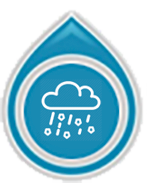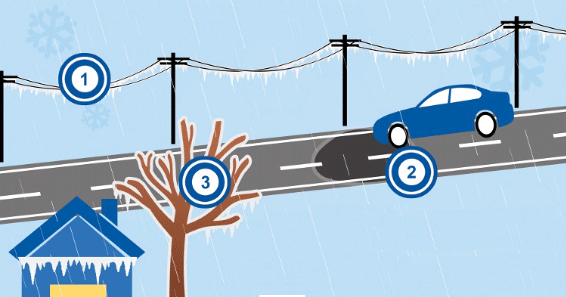Ice storms

Freezing rain occurs when raindrops fall from a warm layer of air into air that is below freezing and becomes supercooled. When the supercooled droplets strike a surface below 0°C they instantly freeze, forming a layer of ice.
- Freezing rain is tough, clings to everything it touches and is more slippery than snow.
- A little freezing rain is dangerous, a lot can be catastrophic

- Ice accumulation increases the weight of a span of powerlines by up to 500 pounds!
- Patches of ice on roads and highways make traveling extremely dangerous
- Ice accumulation increases the weight of a tree branch by 30 times
What to do during
- Ice from freezing rain accumulates on branches, power lines and buildings. If you must go outside when a significant amount of ice has accumulated, pay attention to branches or wires that could break due to the weight of the ice and fall on you. Ice sheets could also do the same.
- Never approach or touch downed power lines. A hanging power line could be charged (live) and you would run the risk of electrocution. Stay back at least 10 meters (33 feet) from wires or anything in contact with them. Remember that ice, branches, or power lines can continue to break and fall for several hours after the end of the precipitation.
- When freezing rain is forecast, avoid driving. Even a small amount of freezing rain can make roads extremely slippery. Wait several hours after freezing rain ends so that road maintenance crews have enough time to spread sand or salt on icy roads.
- Rapid onsets of freezing rain combined with the risks of blizzards increase the chances for extreme hypothermia.
- If you live on a farm, move livestock promptly to shelter where feed is available. Forage is often temporarily inaccessible during and immediately after ice storms.


